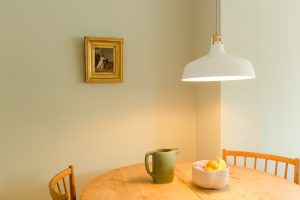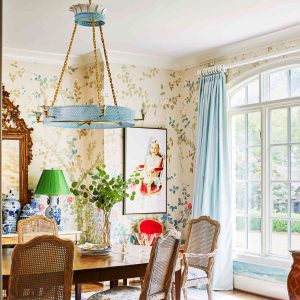Revolutionizing Dining Ambience: The Power of Modern Restaurant Lighting

Introduction
Lighting can be considered as one of the essential elements of any restaurant. It can be the deciding factor whether a customer chooses to dine or not. Modern restaurant lighting has evolved significantly over the years, and it has become a crucial tool in creating a unique dining experience. In this article, we will explore the impact of modern restaurant lighting on the dining experience.
The Role of Lighting in a Restaurant
The primary role of lighting in any restaurant is to create an ambiance that complements the cuisine, decor, and theme of the restaurant. Lighting must fulfill both functional and aesthetic purposes, where it illuminates the space without overpowering it. The right lighting can also affect the customer’s mood, behavior, and even their perception of food. In short, lighting can greatly influence the entire dining experience.
Functional Purposes of Lighting
The functional purpose of restaurant lighting is to provide adequate illumination for customers to dine in a comfortable environment. It is essential to have enough lighting for customers to see their menus and food clearly, but not so much that it becomes overwhelming. Adequate lighting can also enhance safety by avoiding accidents such as slips, trips, and falls, particularly in areas such as entrances, exits, and paths leading to bathrooms.
Aesthetic Purposes of Lighting
The aesthetic purpose of restaurant lighting is creating an ambiance that enhances the dining experience by complementing the decor, colors, textures, and theme of the restaurant. It involves creating a unique vibe that makes customers feel comfortable, relaxed, and enjoy their meals to the fullest. The right lighting can create a particular atmosphere, such as romantic, intimate, energetic, warm, or cool.
Modern Restaurant Lighting Techniques
Modern restaurant lighting techniques have undergone a significant evolution from the traditional methods. New technologies, such as LED lighting, are widely used to create stunning effects that were previously impossible. Here are some common modern lighting techniques used in restaurants.
Accent lighting
Accent lighting involves using light to highlight particular features within the restaurant. It can be used to draw attention to artwork, sculptures, wall designs, or even table settings.
Perimeter lighting
Perimeter lighting involves placing lights around the perimeter of the restaurant to create a soft glow. It is usually used in restaurants with high ceilings to make the space feel smaller.
Task lighting
Task lighting is used to increase illumination in certain areas where specific tasks are performed, such as food preparation areas or the bar.
Color temperature lighting
Color temperature lighting involves setting the tone of the restaurant by using different colors of light. For instance, warm colors such as orange or red can create a cozy, intimate atmosphere, while cooler colors such as blue or green can create a vibrant, energetic mood.
Trends in Modern Restaurant Lighting
Modern restaurant lighting trends are continually evolving, with new ideas and designs emerging every year. Here are some current trends in restaurant lighting.
Natural lighting
Natural lighting involves using windows, skylights, or solar tubes to allow natural light into the restaurant. It is a sustainable solution that saves energy and creates a natural atmosphere.
Lighting fixtures as art
Lighting fixtures are no longer just functional but are now seen as works of art. Modern lighting fixtures are not only beautiful but also come in unique shapes, sizes, and colors.
Multi-functional lighting
Multi-functional lighting is the idea of using one light fixture to perform several functions. For example, a pendant light can provide task lighting for the bar and at the same time act as a decorative feature in the dining area.







